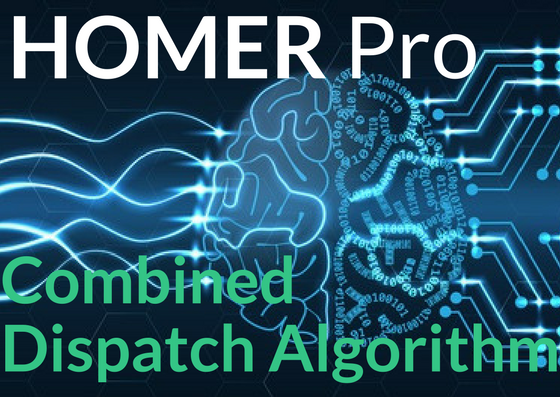
A microgrid controller is essentially the brain of a microgrid. It makes important decisions such as how the daily demand for energy is met, how and when the battery is used, and if that back up generator needs to be turned on. Over time, microgrid controllers have become quite sophisticated and complex, even responding in real time to price signals from a utility. Because each decision has a cost associated with it, an efficient controller that makes the most optimal decision every hour could result in significant savings for a customer.
Twenty-five years ago, when I set about the task of creating HOMERⓇ, the software which has since become the global standard for modeling microgrids, I was faced with a predicament of creating a dispatch algorithm that replicates the controller accurately but also simplifies the complexity associated with it. I realized that a dispatch algorithm with too many bells and whistles could potentially undermine its usability. And I wanted HOMER to be a simple yet powerful microgrid modeling tool for users from all backgrounds, from engineers and professors to business developers and project managers.
How to include storage in a dispatch decision?
Of all the possible components in a microgrid, storage is the center of dispatch strategies. But including storage in a dispatch decision instantly complicates the decision-making process. “Should we charge the battery with diesel now or should we wait for a few more hours when we expect that there will be excess solar production?” This question prompted the creation of the two iconic dispatch strategies in HOMER, Cycle Charging (CC) and Load Following (LF). These two dispatch strategies have now been used in more than a million model runs in HOMER.
By charging the battery with the diesel generator when it is already running, the Cycle Charging dispatch strategy puts more energy in the battery and makes it more likely that the generator can be turned off during future periods of low load. This reduces the total diesel run-time but also increases round-trip losses in the battery. By not charging the battery with diesel, the Load Following strategy ensures that the battery will have the most room to absorb renewable power that might otherwise be curtailed. Often, one of these two strategies is much better than the other, but before running the model, it is hard to predict which one will be better. As a result, HOMER Pro runs both strategies by default.
Combined Dispatch: A two-for-one deal
We created the Combined Dispatch Algorithm to simplify the process by intelligently choosing which strategy to use in each time step. By combining the two dispatch strategies into one, we now have a single strategy that is never far off from the best of the previous two strategies. It was actually part of the old HOMER from 1997-2001 but was removed when we gave HOMER the capability to model multiple generators. We have restored it (with improvements) for HOMER Pro v3.10.
Whether it makes sense to charge the battery from the diesel generator depends on what the net load (load minus solar/wind) will be in the future when the battery will be discharged. If the future net load is low, then it is really valuable to have more energy in the battery to avoid turning on the diesel. Since the future net load is unknown, the Combined Dispatch algorithm uses the current net load as a proxy for the future net load in order to decide whether to charge the battery with the generator. It uses the Cycle Charging dispatch strategy when the net load is low, and the Load Following dispatch strategy when the net load is high.
Flexibility creates better models
By Cycle Charging during periods of low net load, the Combined Dispatch algorithm helps avoid using the generator at low loads. By Load Following during periods of high net load, the algorithm maximizes the use of available renewable energy. The flexibility of being able to account for both high and low loads means the Combined Dispatch algorithm is a better option than choosing between Load Following or Cycle Charging (and potentially making the wrong choice). It is also a better option than running both strategies by default, which doubles the processing time. On top of that, we’ve seen that Combined Dispatch can perform as well, if not better than, either Load Following or Cycle Charging.
Due to their variability, solar and wind power need to be part of a hybrid system. However, hybrid systems are more complex and lead to new questions. In addition to understanding which types of components work best together and their sizing, the system designer also needs to understand how the components should be dispatched to meet the needs of an electric load at a particular time. That’s why the new Combined Dispatch algorithm in HOMER Pro v3.10 is so important. It helps find the answers to these questions and provides the ability to more accurately model hybrid energy systems.
With HOMER Pro v3.10, users can utilize the Combined Dispatch algorithm on its own, instead of having to run both Cycle Charging and Load Following. This cuts computation time in half, and also helps HOMER stay faithful to the original vision of building a tool that simplifies microgrid decisions. Download HOMER Pro here.
